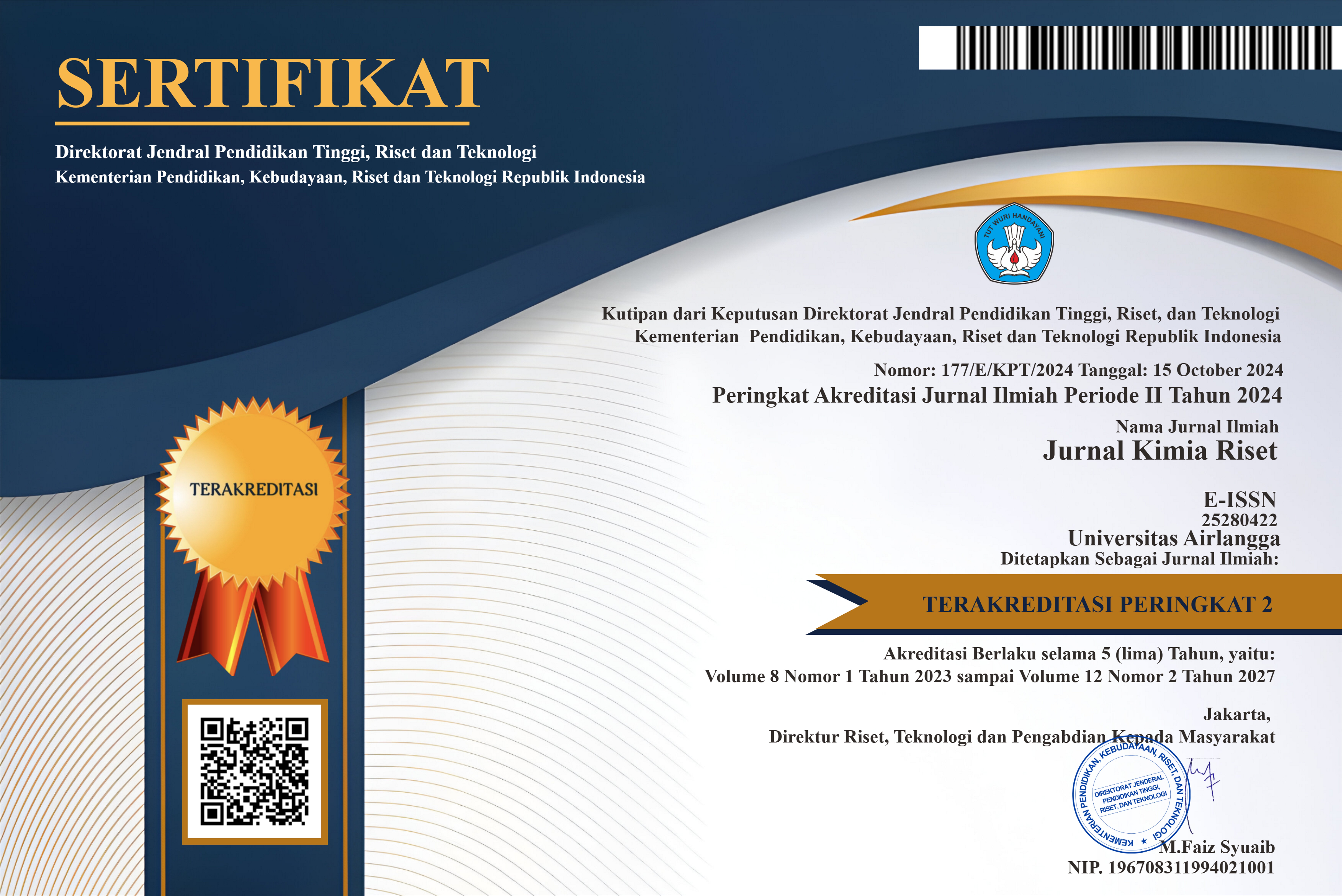EVALUATING ACETONE AND METHANOL FOR ELECTROPHORETIC DEPOSITION OF SS 316L COATED WITH HYDROXYAPATITE/MULTIWALLED CARBON NANOTUBES DENTAL IMPLANTS: A FOCUS ON CORROSION RESISTANCE
Downloads
Dental implants offer a reliable solution for replacing damaged tooth roots. This research investigates the comparative performance of acetone and methanol as suspension media in the fabrication of stainless steel type 316L-based dental implants using the Electrophoretic Deposition (EPD) method, a technique known for its simplicity and cost-effectiveness. Voltage variations of 20V, 30V, and 40V were applied to both acetone and methanol suspensions for a duration of 20 minutes. The morphology of the Hydroxyapatite/Multiwalled Carbon Nanotube (HA/MWCNT) coatings was meticulously characterized using Scanning Electron Microscopy (SEM). Corrosion resistance was evaluated through Potentiodynamic Polarization (PDP) and Electrochemical Impedance Spectroscopy (EIS) techniques. Remarkably, at 30V, a homogeneous and crack-free coating was achieved, demonstrating superior corrosion resistance. This was further corroborated by the resistance values of 23.891 Ω and 114.990 Ω for the acetone and methanol samples, respectively. Additionally, the corrosion rates of 0.075 (mmpy) and 0.0004 (mmpy) for the acetone and methanol samples further emphasized the superiority of methanol as a suspension medium. These findings unequivocally establish methanol as the optimal choice for achieving superior deposition quality and corrosion resistance in the context of the EPD method for stainless steel type 316L-based dental implants.
Akbar, A. F., ‘Aini, F. Q., Nugroho, B., and Cahyaningrum, S. E., 2021. Sintesis dan Karakterisasi Hidroksiapatit Tulang Ikan Baung (Hemibagrus nemurus sp.) Sebagai Kandidat Implan Tulang. Jurnal Kimia Riset, 6(2), 10-11.
Alaska, A., and Bartmanski, M., 2020. Parameters of the Electrophoretic Deposition Process and Its Influence on the Morphology of Hydroxyapatite Coatings. Review. INÅ»YNIERIA MATERIAÅOWA, 2020(1), 18-23.
Amrollahi, P., Krasinski, J. S., Vaidyanathan, R., Tayebi, L., and Vashaee, D., 2015. Electrophoretic Deposition (EPD): Fundamentals and Applications from Nano- to Micro-Scale Structures. Springer International Publishing Switzerland. Handbook of Nanoelectrochemistry, 19-22.
Bruschi, M., Nethl, D. S., Goriwoda, W., and Rasse, M., 2015. Composition and Modifications of Dental Implant Surfaces. Journal of Oral Implants, 2015, 1-14.
Chaturvedi, and Upadhayay., 2010. An overview of orthodontic material degradation in oral cavity. Indian J Dent Res, 21(2)., 5-6.
Chaudhary, B., Panwar, V., Roy, T., and Pal, K., 2020. Effect of addition of hydroxyapatite as secondary filler in CNT-reinforced polypropylene hybrid composites. Polymers and Polymer Composites, 7-9.
Farrokhi-Rad, M., Shahrabi, T., and Shahriari, F., 2014. Electrophoretic deposition of titania–carbon nanotubes nanocomposite coatings in different alcohols. Journal of the European Ceramic Society, 34(2014), 4412-4413.
Garbacz, H., and Kro´likowski, A., 2019. Corrosion resistance of nanocrystalline titanium. Elsevier Inc. All rights reserved., 150-154.
Gopi, Shinyjoy, Sekar, Surendiran, Kavitha, and Kumar, S., 2013. Development of carbon nanotubes reinforced hydroxyapatite composite coatings on titanium by electrodeposition method. Corrosion Science 73 (2013) 321–330.
Henkel, S., Misuraca, M. C., Troselj, P., Davidson, J., and Hunter, C. A., 2018. Polarisation effects on the solvation properties of alcohols. rsc.li/chemical-science, 88-93.
Ivvala, J., Kuriachen, B., and Sharma, V. S., 2019. A Review on the Selection of Dental Implant Material and Suitable Additive Manufacturing Technique in Dentistry. International Conference on Production and Industrial Engineering, 1-9.
Kang, M. S., Jang, H. J., Lee, S. H., Lee, J. E., Jo, H. J., Jeong, S. J., Han, D.-W., 2021. Potential of Carbon-Based Nanocomposites for Dental Tissue Engineering and Regeneration. MDPI, 5-10.
Liu, S., S, V., Chevali, Xu, Z., Hu, D., and H. W., 2018. A review of extending performance of epoxy resins using carbon nanomaterials. Composites, 5-8.
Magar, H. S., Hassan, R. Y., and Mulchandani, A., 2021. Electrochemical Impedance Spectroscopy (EIS): Principles, Construction, and Biosensing Applications. Sensors, 7-10.
Manivasagam, Dhinasekaran, D., and Rajamanickam, A., 2010. Biomedical Implants: Corrosion and its Prevention - A Review. Recent Patents on Corrosion Science, 2010, 2, 40-54, 44-45.
Nasar, A., 2018. Hydroxyapatite and its coatings in dental implants. Applications of Nanocomposite Materials in Dentistry, 153-154.
Nguyen, T. T., Pham, N. T., Dinh, T. T., Vu, T. T., Nguyen, H. S., and Tran, L. D., 2020. Electrodeposition of Hydroxyapatite-Multiwalled Carbon Nanotube Nanocomposite on Ti6Al4V. Advances in Polymer Technology, 9-10.
Ranamanggala, J. A., Laily, D. I., Annisa, Y. N., and Cahyaningrum, S. E., 2020. Potensi Hidroksiapatit dari Tulang Ayam Sebagai Pelapis Implan Gigi. Jurnal Kimia Riset, 5(2), 141-142.
Rehman, M. A., Chen, Q., Braem, A., Milo, Shaffer, and Boccaccini, A. R., 2020. Electrophoretic deposition of carbon nanotubes: recent progress and remaining challenges. International Materials Reviews, 2-6.
Rodrı´guez-Lugo, and Karthik, T. V., 2018. Wet chemical synthesis of nanocrystalline hydroxyapatite flakes: effect of pH and sintering temperature on structural and morphological properties. Royal Society Open Science, 6-11.
Sivaraj, D., and Vijayalakshmi, K., 2018. Novel synthesis of bioactive hydroxyapatite/f-multiwalled carbon nanotube composite coating on 316L SS implant for substantial corrosion resistance and antibacterial activity. Journal of Alloys and Compounds, 12-16.
Thom, N. T., Nam, P. T., Phuong, N. T., Hong, C. T., Trang, N. V., Xuyen, N. T., and Thanh, D. T., 2017. Electrodeposition of Hydroxyapatite/Functionalized Carbon Nanotubes (HAp/fCNTs) Coatings on the Surface of 316L Stainless Steel. Vietnam Journal of Science and Technology, 55(6), 706-715.
Tsosie, H., Thomas, J., and Zavaliangos, A., 2017. Scanning Electron Microscope Observations of Powder Sticking on Punches during a Limited Number (N < 5) of Compactions of Acetylsalicylic Acid. Springer Science+Business Media New York 2017, 26-30.
Tucureanu, V., Matei, A., and Avram, A. M., 2016. FTIR Spectroscopy for Carbon Family Study. Critical Reviews in Analytical Chemistry, 503-508.
Zhang, D., Zhang, H., Wen, J., and Cao, J., 2019. Preparation and characteristics of zinc and strontium co-doped hydroxyapatite whiskers. IOP Conf. Series: Earth and Environmental Science 233, (2019)022007, 2569-2612.
Copyright (c) 2024 Jurnal Kimia Riset

This work is licensed under a Creative Commons Attribution-NonCommercial-ShareAlike 4.0 International License.
COPYRIGHT NOTICE
1. By submitting the article to Jurnal Kimia Riset (JKR), the author has agreed to transfer some of the copyrights to the publisher of the research chemistry journal, Universitas Airlangga, indicated in the Copyright Transfer Agreement.
2. Authors still retain significant rights to use and share their own published articles for non-commercial purposes subject to Creative Commons Attribution-NonComercial 4.0 International License
3. All publications (printed/electronic) are open access for educational purposes, research, library, and other non-commercial purposes. Besides the purposes mentioned above, the editorial board is not responsible for copyright violations.















